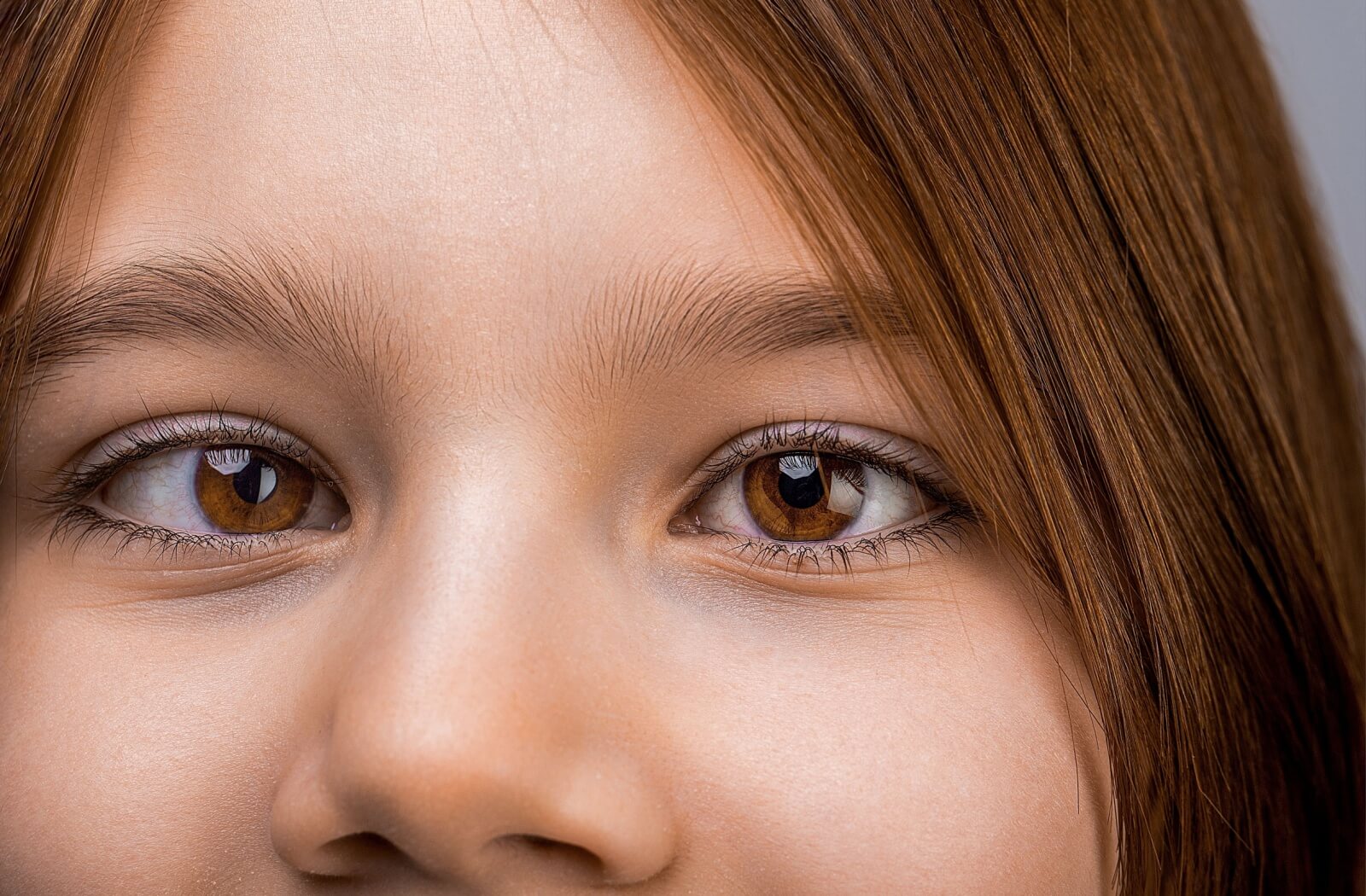Seeing your child reach new milestones is one of the most joyous aspects of parenting. However, it’s important to stay vigilant about their health and development, including their eye health.
Strabismus, commonly known as crossed eyes, can first present in children at a young age. Early detection is crucial to help protect your child’s vision as they grow, so know when you should bring your child to the optometrist.
You should be concerned about your child’s crossed eyes if the condition persists beyond six months of age, worsens over time, or if your child experiences difficulty with vision or eye alignment.
Why Do Eyes Become Crossed?
Crossed eyes, or strabismus, is a condition in which the eyes do not properly align when focusing on an object. This misalignment can lead to confusion in the brain, which might ignore the input from one eye to help maintain clear vision. The types of strabismus depend on which direction the turned eye points, such as esotropia (inward turning), exotropia (outward turning), and hypertropia (upward or downward turning).
Common causes of crossed eyes include:
- Genetics: A family history of strabismus can increase the likelihood of your child developing this condition.
- Uncorrected refractive errors: Uncorrected vision issues like nearsightedness, farsightedness, or astigmatism may contribute to misalignment.
- Muscle imbalance: Problems with the eye muscles that control movement can lead to misalignment of the eyes.
- Neurological conditions: Certain disorders affecting the nervous system can result in strabismus.
- Injury or trauma: Physical trauma to the eye or head can disrupt normal eye alignment.
- Environmental factors: This can include excessive screen time or unhealthy visual habits during crucial developmental stages.
Signs & Symptoms of Crossed Eyes
While a notably misaligned eye is a strong indicator of strabismus, not every symptom is as obvious. Sometimes, the eyes only cross during intense focus, and your child may get frustrated that they can’t see clearly but not be able to explain why in words.
Alternatively, some signs of crossed eyes include:
- Head tilting
- Squinting or closing one eye
- Difficulty judging distances due to poor depth perception
- Frequent complaints of blurriness
- Eye fatigue or rubbing their eyes
- Avoiding eye contact
Babies’ and toddlers’ eyes may appear to be crossed, but this is sometimes a condition called pseudostrabismus, caused by extra skin around the eyes. So don’t panic if you notice it occasionally in infants under 6 months. However, strabismus will not get better without treatment.
If your child’s eyes appear consistently misaligned or if they show signs of visual discomfort, consult an eye care professional. Even if you think it may be pseudostrabismus, it’s better to be safe. An optometrist or ophthalmologist can provide a comprehensive assessment to determine the best course of action for your child’s unique needs.
How Strabismus Can Lead to Amblyopia
When a child has strabismus, their eyes are not aligned properly, which can confuse the brain. Normally, both eyes send signals to the brain about what they see, and the brain combines these signals to create a clear, single image. However, if one eye is turned in a different direction, the brain might ignore the input from that eye because it makes seeing more complicated.
Over time, this can lead to a condition called amblyopia, or lazy eye. Amblyopia occurs when one eye doesn’t develop normal vision because the brain isn’t using it. It’s like the brain chooses to “turn down the volume” on the confused eye, resulting in weaker vision.
This is why it’s so important for parents to watch for any signs of strabismus early on—catching it can help ensure both eyes work together to form a clear image and allow for healthy visual development.

Diagnosis & Treatment Options for Crossed Eyes
Diagnosing strabismus usually involves a series of eye tests to assess vision, alignment, and coordination. An optometrist can often diagnose strabismus simply by looking at your child’s eyes, so these tests are designed to be kid-friendly and non-invasive.
Treatment options vary depending on the severity and type of strabismus but may include:
- Corrective eyewear
- Prism lenses
- Vision therapy
- Surgery.
Each approach aims to improve alignment and vision cooperation between both eyes.
Treating strabismus early can make a world of difference. Early intervention increases the likelihood of successful treatment, helping to prevent long-term vision problems. It’s never too early to prioritize your child’s eye health.
Practical Tips for Parents of Children with Crossed Eyes
Supporting your child through treatment is essential for their success. Encourage them to wear their glasses or an eye patch consistently and participate in any recommended vision therapy exercises. Your optometrist may suggest exercises to create a visually stimulating environment with activities encouraging eye tracking and coordination.
Regular check-ups with your optometrist can help monitor progress so we can adjust treatments as needed.
A Vision for the Future with Insight Eyecare
Keeping a close watch on your child’s vision is an investment in their future. If you’re concerned about crossed eyes or any other eye health issues, don’t hesitate to reach out for professional guidance.
At Insight Eyecare, we’re passionate about providing the highest standard of care for your child’s eyes. Our team of experienced professionals is here to help every step of the way so your little one can see the world confidently.
Schedule an appointment with us today to give your child a healthy start on their visual journey!







